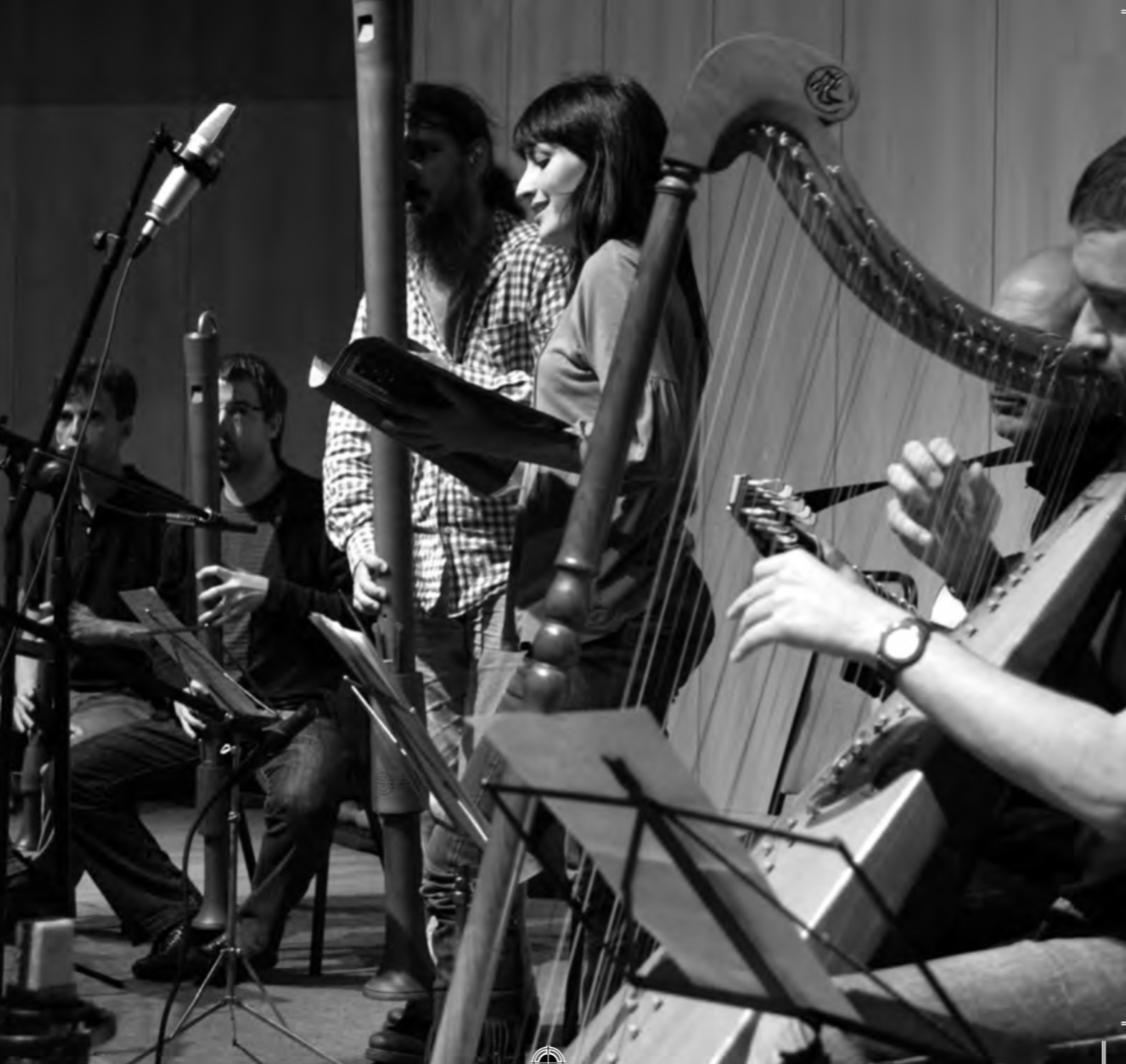
With Speculum.

“One of the most obscure periods in the history of Italian music lies between the presumed fading of the Ars Nova period around 1430 and the emergence of the frottola some 50 years later.”
— Walter H. Rubsamen, The Justiniane or Viniziane of the 15th Century, 1957
Credits
Musicians
Mariví Blasco, soprano
Juan Carlos de Mulder, vihuela & lute
Vicente Parrilla, recorder
Guillermo Peñalver, recorder
Ernesto Schmied, recorder & musical direction
Manuel Vilas, harp
Tracklist
- Plus j’ay le monde - Madona bella, Robert Morton (ca. 1430–ca. 1479) 2’54
- N’oés vous point - Coq en l’orge, anon. 4’25
- Se mon flagolet joli, anon. 2’21
- Puisque je sui infortunee, Horlay (fl. ca. 1450?) 1’32
- Yerra con poco saber, Johannes Cornago (ca. 1400–ca. 1474) 2’30
- Maintenons nous - Resvelle qui dort, anon. 5’02
- Donnés au leal prisonnier, anon.* 2’21
- Sine verbis, anon. ∆ 0’59
- Morte o merce (instr.), J. Cornago 1’38
- Morte o merce, J. Cornago 2’08
- La Bassa de Castiglia, Guilielmus Monachus (fl. s. XIV) 1’17
- La Spagna, Francisco de la Torre (fl. 1483–1504) 2’34
- Canon De tous biens playne, Josquin des Prez (ca. 1450/55–1521) 1’08
- Contrapunto De tous biens playne, Cancionero de Segovia (ca. 1501/03) 1’18
- De tous biens playne, Hayne van Ghizeghem (ca. 1445–1476/97) 4’49
- O gratiosa viola mia, anon. 3’10
- Mirando el gran splendor, anon. 3’49
- Helas mon tetin, anon. 1’43
- N’aray-je jamais, anon. 3’23
- Hora crydar, anon. 3’00
- Je vis toujours, Petrus de Domarto (fl. 1445/55?) 1’26
- Je soloie faire, Her bergerés, anon. 2’46
* - Cantus: Ernesto Schmied
∆ - Cantus: Vicente Parrilla
Liner notes excerpt
“Manuscript IV.a.24 in the Library of the Monastery of El Escorial, known in a select circle of experts as Escorial B or EscB for short, begins – rather like one of those codices that appear in science fiction films – with a blank page marked with three initials: D H M. These naturally correspond to one of its owners, and indeed the mystery is soon resolved because we know that the Spanish writer and diplomat Diego Hurtado de Mendoza [1505- 1575] bequeathed his extraordinarily rich library to Philip II and that it ended up at the recently built El Escorial along with the other books in the royal collection. However, there is a certain aura of mystery about the manuscript itself – a music text – because no one knows where it came from or who might have used it.”
— Maricarmen Gómez
Production
- Recording: Guadarrama, October 2009
- Artistic adviser: Bart Vandewege
- Recording engineer: José Miguel Martínez
- Editing: José Miguel Martínez, Bart Vandewege & Ernesto Schmied
- Executive producer: Ernesto Schmied
- Production: Dismóvil & Openmusic
- Texts: Mari Carmen Gómez Muntané & Ernesto Schmied
- Translation: Polisemia
- Selection of the images: Ernesto Schmied
- Design: Openmusic
- Cover: Helix nebula
- Selection and musical arrangements: Ernesto Schmied & Speculum